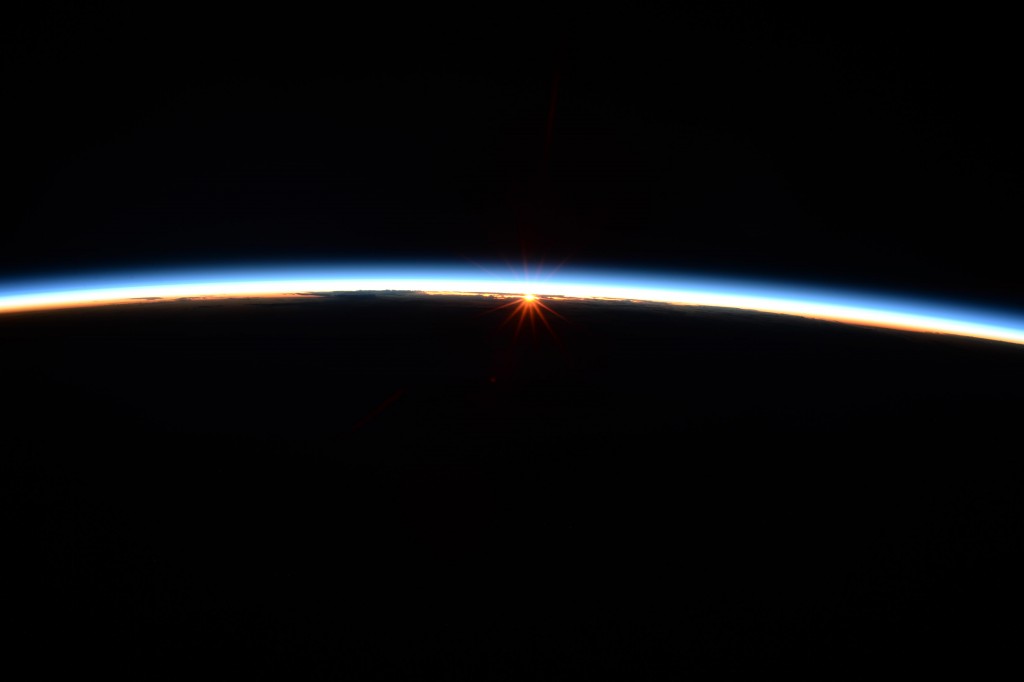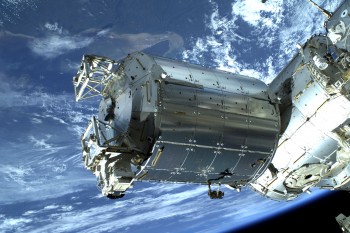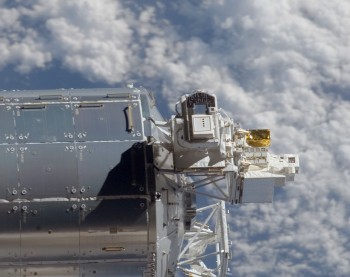A facility on the International Space Station is observing the Sun bolted outside Europe’s Columbus laboratory. We asked the SOLSPEC team to explain:
What is SOLSPEC?
SOLAR/SOLSPEC (for SOLar SPECtrum) is a space experiment that is part of the Solar Monitoring Observatory (SOLAR) payload mounted to the outside of the Columbus module of the International Space Station. It has been in operation since 2008. This space experiment combines three Czerny-Turner double monochromators with concave gratings to measure the Solar Spectral Irradiance (SSI) from 166 nm to 3088 nm.
Our scientific objective requires an absolute calibration that was performed before its flight into space using standard models of spectral irradiance such as deuterium lamps and a blackbody developed by the Physikalisch-Technische Bundesanstalt in Germany.
How did SOLSPEC come about?
The SOLSPEC project started in the 1970s by the French Centre National de la Recherche Scientifique, Service d’Aéronomie (CNRS-SA) and supervised by France’s space agency CNES. The SOLSPEC instrument participated in five space missions during the 80s and 90s on SPACELAB, ATLAS 1 to 3 and EURECA. SOLSPEC was selected again in 1997 for the SOLAR mission and the instrument was fully refurbished. The Belgian institute for space astronomy BIRA-IASB contributed significantly to its development with hardware, the characterization and the absolute calibration. The Observatory of Heidelberg in Germany also contributed to this project.
The SOLAR mission has been operating since 7 February 2008 and has had its mission extended twice until end 2016.
How does it work?
The SOLAR platform can track the Sun up to 20 minutes each orbit of the International Space Station. These Sun Visibility Windows occur around 12 days every month.
Why are we monitoring the Sun?
Solar Spectral Irradiance is a key input for climatology scientists and for research into planetary atmospheres as well as for solar physics.
How much radiation and energy the Sun’s emits changes a lot over time. For example, during its 11-year solar cycle, the SOLAR/SOLSPEC instrument observed more than 10 % change in the UV part of the solar spectrum. Continuous and accurate monitoring of the Sun radiation offers a better understanding of the processes inside our nearest star.
Our data is an extra input for research and modeling of atmospheric photochemistry as the composition, thermal structure, and dynamics of the atmosphere are influenced by the solar flux, its spectral distribution and changes over time.
Read more about SOLAR in this article on the ESA website.




Discussion: no comments